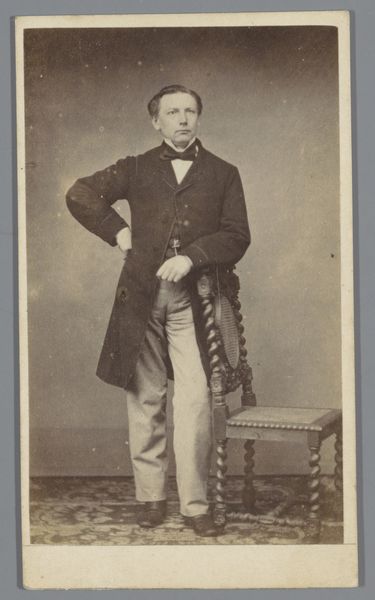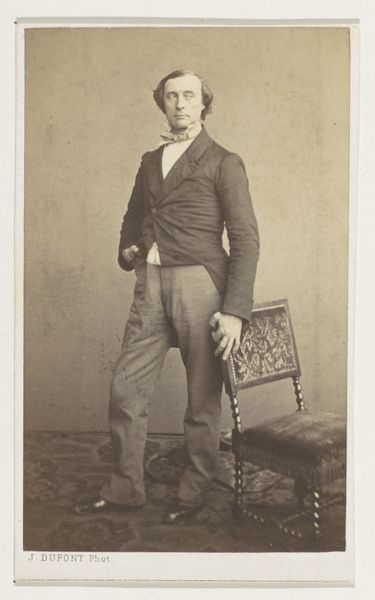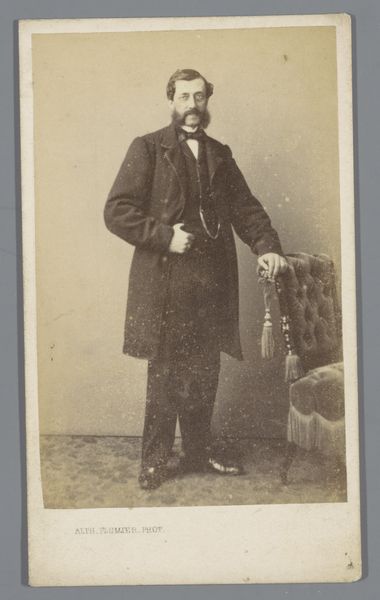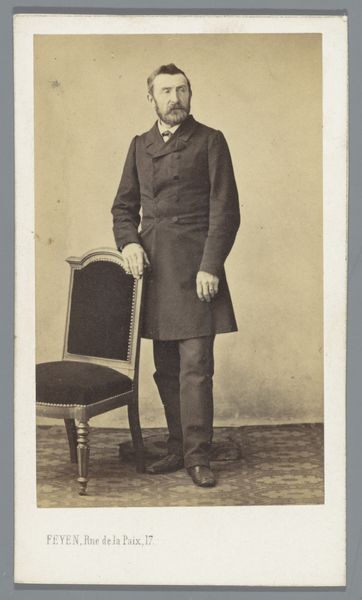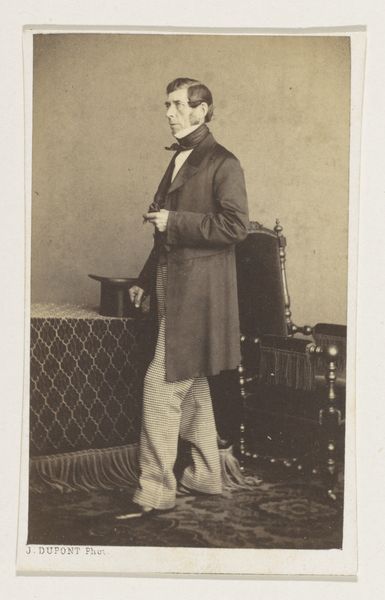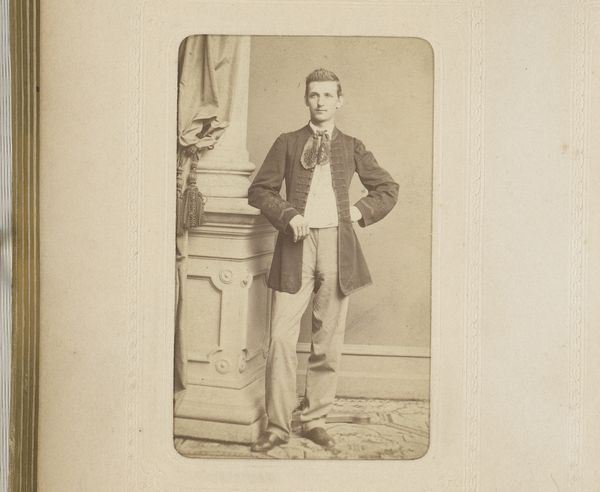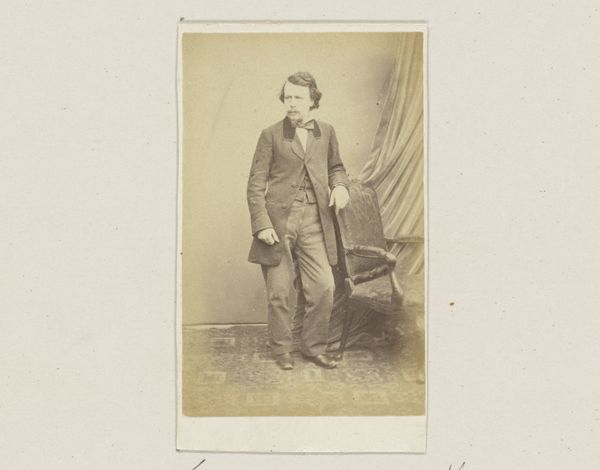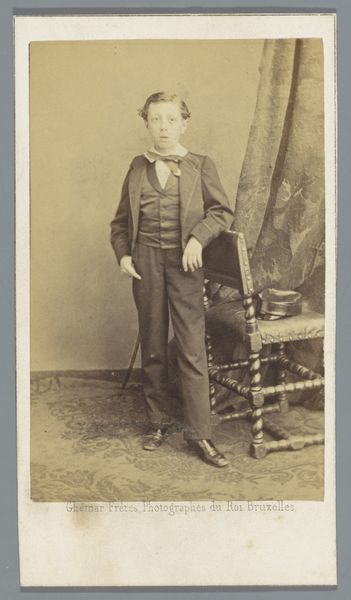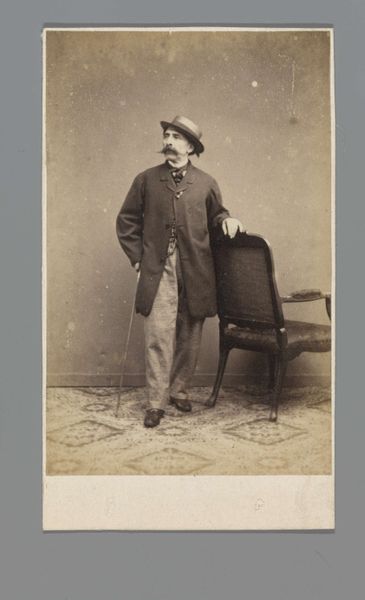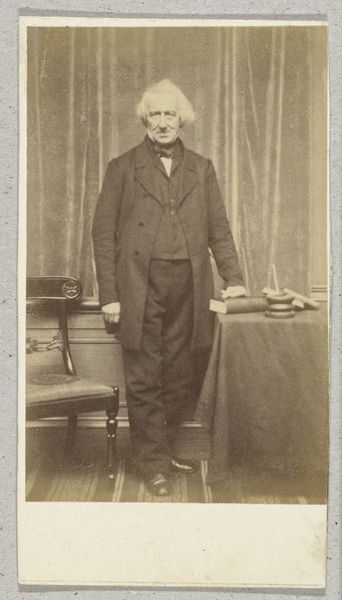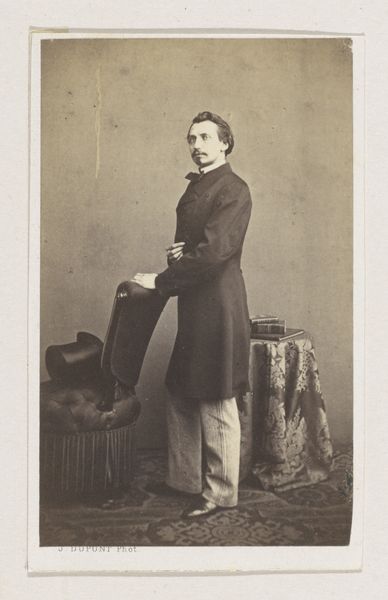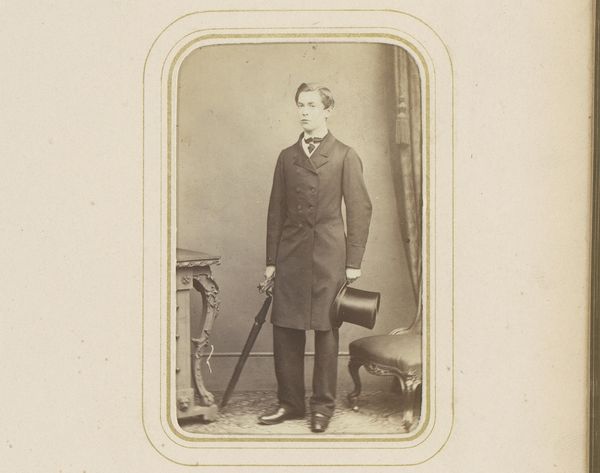
photography, albumen-print
#
portrait
#
photography
#
genre-painting
#
albumen-print
#
realism
Dimensions: height 89 mm, width 57 mm, height 105 mm, width 62 mm
Copyright: Rijks Museum: Open Domain
Curator: Here we have an albumen print from around 1865, titled "Portrait of an Unknown Young Man," currently held at the Rijksmuseum. Editor: There's a formality and restraint that almost feels voyeuristic; the turned back, the carefully posed jacket slung on the chair... it's a picture heavy with unspoken stories. Curator: The absence of a face certainly invites speculation. This type of photographic portrait emerged amidst evolving class structures; it serves as a compelling study of representation and the construction of identity in that era. Who was considered worthy of portrayal? Editor: From a formal point of view, consider the careful arrangement of tones – the soft gradations of gray that sculpt the figure. It really speaks to an early mastery of light and shadow in photography. Notice the sharp contrast with the flat backdrop and its subtle texture. Curator: Precisely. But consider the social implications of photography at the time. The proliferation of images, especially portraits, coincided with intense political and social upheaval, influencing visual culture profoundly. Who had access to these forms of representation and what social performances were they staging? Editor: And what narrative were the creators, Wegner & Mottu, crafting through their own choices in composition and staging? The photograph creates its own micro-universe. How do these elements speak to us on a subconscious level? What structural components—line, form, tone—create meaning, irrespective of social background? Curator: The deliberate gesture of concealing the face provokes questions about class, masculinity, and representation. This resonates across time and invites contemporary viewers to consider portraiture through diverse perspectives. Editor: I concede it's difficult not to wonder about this unknown person. Analyzing its visual elements helps us get close to understanding, at least partially, their time and our own aesthetic preferences today. Curator: The beauty of this piece truly resides in its many layers, and the chance it gives us to think critically about art's broader implications. Editor: Absolutely. It’s a dance between what is there, materially speaking, and what isn’t. A fascinating photographic composition, ripe for aesthetic and philosophical thought.
Comments
rijksmuseum almost 2 years ago
⋮
Carte-de-visite portraits were the major source of income for professional photographers. Wegner, a German lithographer, established himself in Amsterdam in 1849. We know with certainty that he already had a photography studio in 1855, and from 1862 he worked together with Mottu. The duo became the city’s most sought-aftersociety photographers. This photograph – presumably of an assistant – was a joke: the young man was also recorded from behind.
Join the conversation
Join millions of artists and users on Artera today and experience the ultimate creative platform.
